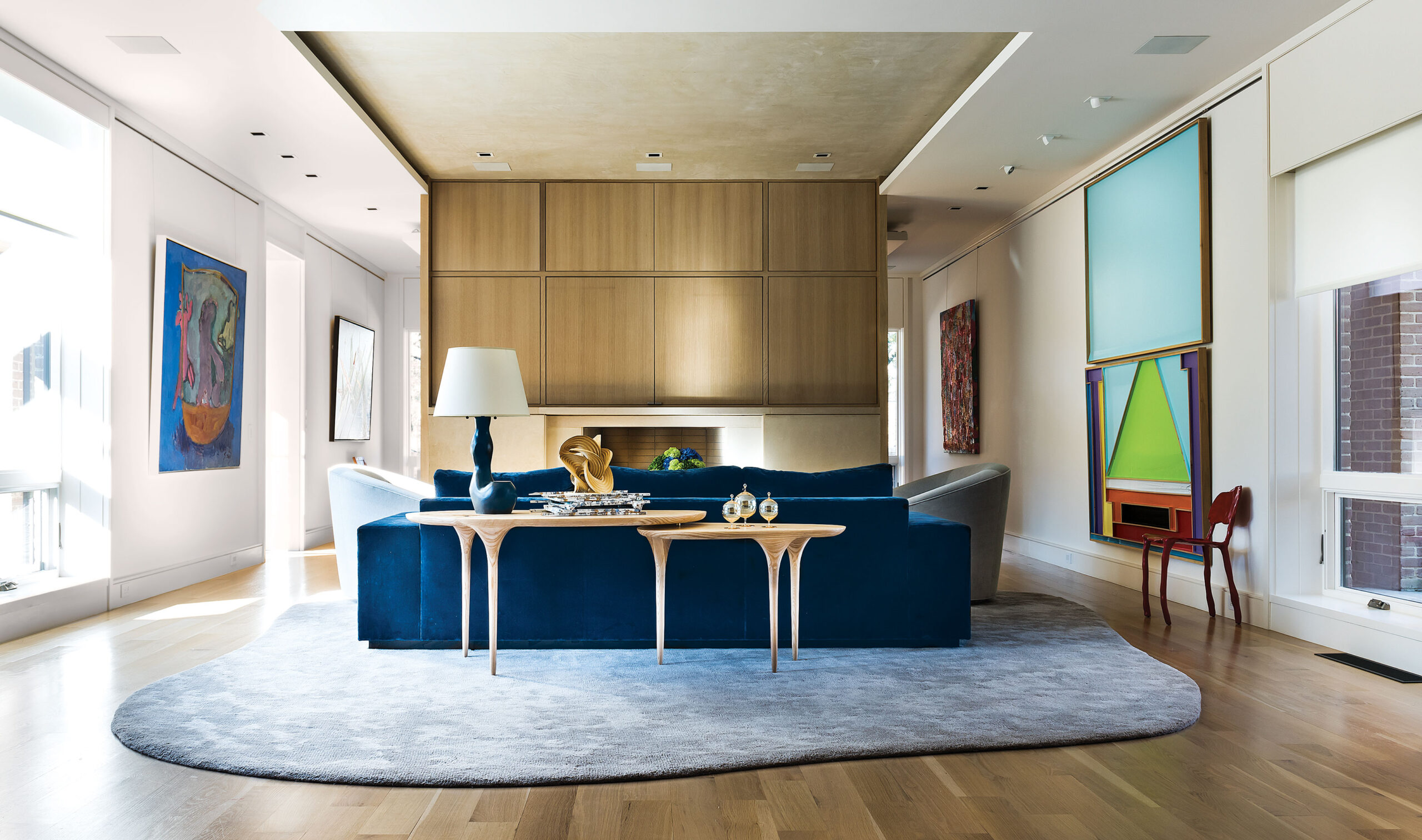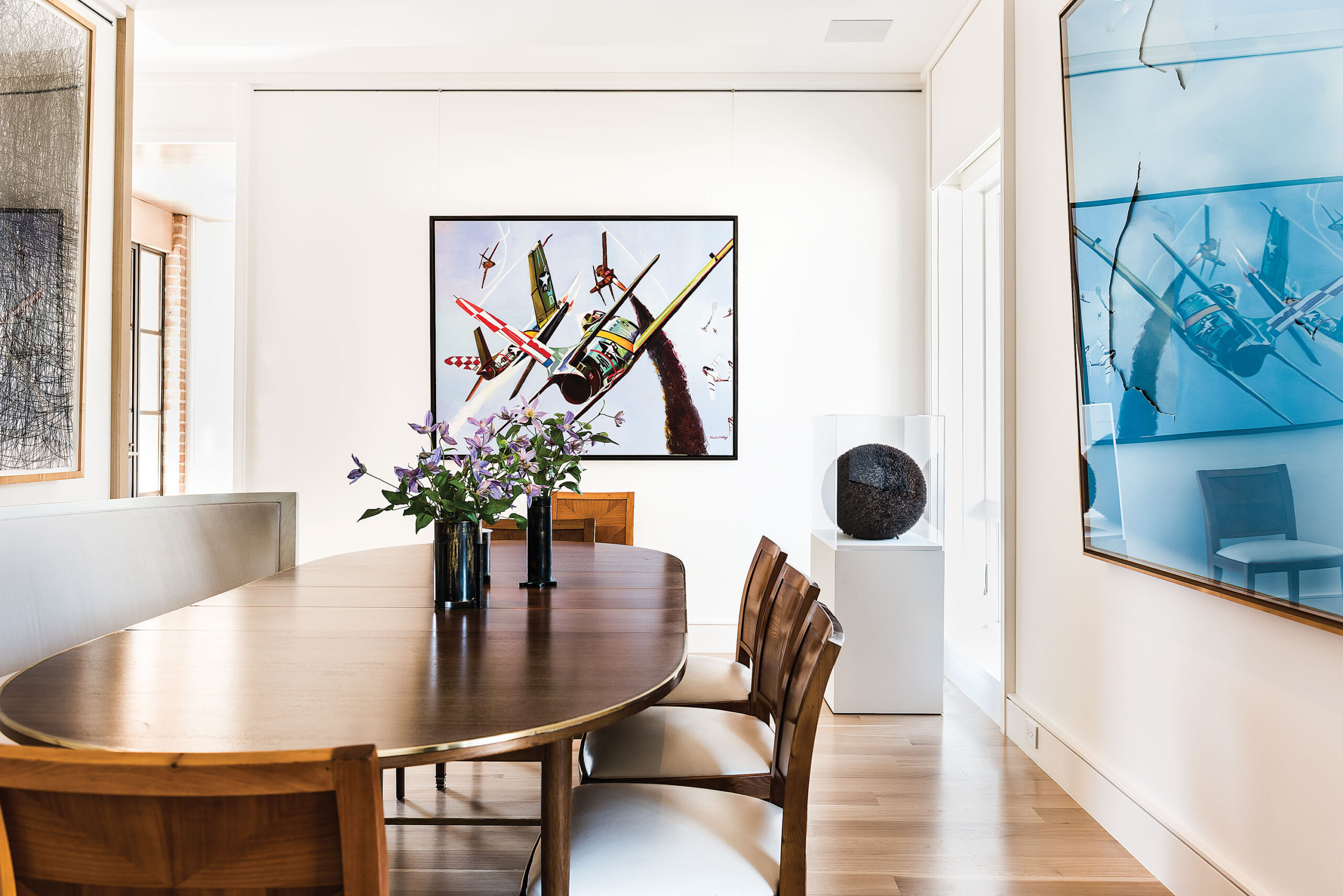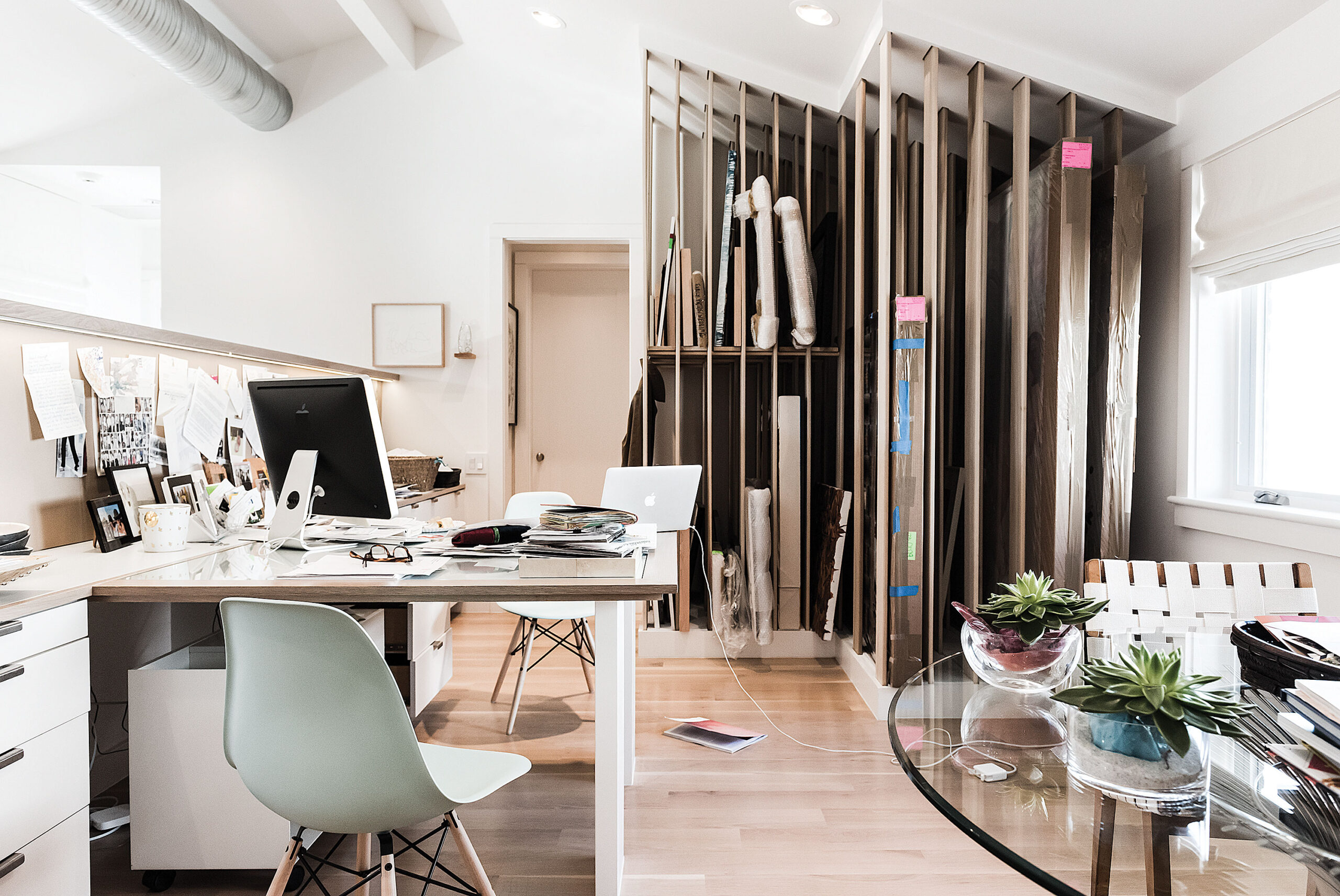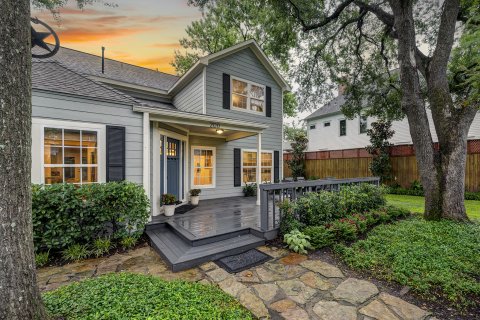Leaving Preston Hollow Behind For a Better Dream Home: This Modern Marvel Embraces More Than Art
BY Rebecca Sherman // 03.18.16In the den, a Mies van der Rohe daybed purchased on 1stdibs.com. The Mies van der Rohe coffee table is 30 years old. Knoll chair. Painting is Joe Zucker’s "Walleye,", 1994. Chinese Han Dynasty vase on table. Madeline Weinrib rug.
When Dallas Art Fair co-founder and private dealer Chris Byrne wants to show young clients a stellar art collection and examples of specific artists’ works, he often brings them to a modestly scaled house in Greenway Parks. It’s also a great example of how to live comfortably with art.
The antithesis of a sterile white box, the newly constructed soft modern house is crafted in warm rift-cut white oak, polished pigmented plaster, Lueder limestone and wood-molded brick from 125-year-old St. Joe Brick Works in Louisiana. Owned by Byrne’s friend and former business partner and her real-estate developer husband, the two-story abode was designed to accommodate large-scale art without sacrificing livability.
“Their collection was a primary consideration, so there’s a lot of space for painting and sculpture,” Byrne says. “The space feels very intimate and tailored to the artwork.”
For the homeowners, building a new house was a chance to start fresh after living in Preston Hollow for 22 years and raising their children. “Our old house was on an acre with a pool, and everything was geared to the kids,” the wife says. With their children out of college, the time was right to move from their renovated 1950s residence with its stark white walls and communal dining and living areas into something less hard-edged.
“I wanted something cozy and warm with defined rooms,” she says. “I also wanted some traditional elements, like moldings.”

The seemingly perfect house landed on the market in Greenway Parks — a late-1940s structure in need of work. Positioned on a corner lot and backing up to one of the neighborhood’s highly coveted greenbelts, this was their dream location. “Be careful what you ask for,” she says, laughing.
Interior designer Paul Dickel of Nancy G. Leib & Paul T. Dickel Architectural and Interior Design was brought on board for the renovation after the wife admired his work on a friend’s house. Dickel assessed the structure and created a plan for renovation. “It was perfect — exactly what I wanted,” the wife remembers. But when the preliminary pricing came in, Dickel immediately suggested they tear it down and build new. “It didn’t make sense to put that kind of money into a renovation,” he says.
Soon after, the couple was having dinner with their lawyer — who was also a good friend — and the topic of the house’s renovations came up. “‘Paul thinks you should tear the house down,’” the wife remembers he told them, point-blank. “The next morning, my husband is sitting at the computer going over the numbers, his hair all puffed out, and he slaps a paper on the desk. ‘Let’s tear it down.’”
The scenario could be straight out of Mr. Blandings Builds his Dream House, the 1948 film in which Cary Grant consults a string of experts — including their best friend and lawyer — with the hope of saving the crumbling stone farmhouse that he and Myrna Loy have impulsively purchased, only to be told by each to tear it down. In the end, of course, they bulldoze it and build the house they really wanted. Like Grant and Loy, our homeowners eventually demurred, suggesting that Ryburn and Dickel team to build their new dream house (Dickel’s business partner Nancy Leib joined the project later).
The collaboration was a perfect fit: Dickel and Ryburn had worked together in the ’70s and ’80s with legendary architect Bud Oglesby, and Ryburn had worked with Leib on residential projects in later years. But Ryburn, who is semi-retired and designs only a few select houses, had a stipulation of his own.
“I told the homeowner I’d help her if she used Steve McCombs as the general contractor,” Ryburn says. “I knew I could trust him, and if the contractor isn’t qualified, then it’s not an enjoyable process. It ended up being a great relationship between us all.” The architect focused on creating a house that not only fit the homeowner’s requirements for livability, but suited its environment.

Dating to the mid-1920s, the Greenway Parks Conservation District is known for its open, private parkways clustered with houses in a range of architectural styles, including 1920s Tudor, postwar modern Bauhaus and sprawling ’50s ranch houses. “The design I created responded to earlier modernist houses in Greenway Parks,” says Ryburn, who has worked on a dozen projects in the area. “I wanted it to have a lot of transparency and natural light and views to the greenbelt.”
Visibility had to be altered a bit when curious neighbors walking on the greenbelt kept peering inside — faces pressed to the windows — but strategically placed hedges, benches and Japanese maples took care of that. With a standing-seam metal roof, the architecture hints at Texas vernacular style. Clad in a light tan and rose blend of historic St. Joe brick, the exterior nods to other striking St. Joe brick structures in Dallas, including the 1960–designed St. Michael and All Angels Episcopal Church, for which Ryburn recently built a courtyard columbarium.
After a 15–year career as a private art advisor, the homeowner recently retired to focus on building her own collection, which includes works by mid-career and established artists such as Peter Saul. She’s intensely interested in outsider art, including works by Vahakn Arslanian, James Castle and Mark Lombardi; she also owns important drawings and paintings by Jim Nutt, a Chicago Imagist. Her personal collection comes out of her relationship with artists.
“Her knowledge allows her to work intuitively, avoiding the self-consciousness that can sometimes be a trap for collectors,” Byrne says. He credits her with helping to organize local exhibitions, talks and performances by artists William Anastasi, Peter Halley and Scott Reeder. She also promoted the careers of emerging young artists and helped reintroduce the work of established artists Peter Saul and Joe Zucker. “She sees a lot and is tireless in the pursuit … and she’s very kind and curious — it’s often the same attributes that great artists have.”
As strong as her personal collection may be, the house is not an art gallery. It needed to accommodate the many ways the couple entertains: cocktail parties for her husband’s clients and smaller gatherings, such as hosting a speaker and guests around the living-room fireplace for the various nonprofits with which she’s involved, including the Dallas Contemporary and Planned Parenthood.
“They have a public and private life,” Dickel says, “so we designed distinct areas for both. They wanted a very social and gracious entertaining space with a separate kitchen, because gatherings will be catered. In the kitchen, I had this idea of doing something cozy and English, and Nancy [Leib] sparked it up with Carrara marble and made it sing. It has a great personality.”

Unlike some art-packed houses that threaten to float away in a cloud of white, this house is grounded with warm white oak and limestone floors, and topped with ceilings in polished plaster and plank white oak. Some of the exterior materials, such as Lueders limestone and St. Joe brick, extend inside the front and back entries and utilities area.
This helps to “keep the feel of the outside coming in, so that there’s no real divisions,” Dickel says. “All of the materials we used give the house depth and texture and dimension.”
The furnishings contribute yet another layer of sophistication — an artful mix of custom pieces designed for the house by Leib and Jeffrey Lee of Grange Hall, along with the couple’s existing furniture, including an Yves Klein coffee table in the living room, an Andrée Putman settee attending a vintage Paul McCobb table in the dining room, and classic designs by Warren Platner, Mies van der Rohe and Knoll scattered throughout.
At the end of the day, the house was designed not for an art collector to pull up a chair in front of her favorite painting and sigh, but for a couple with grown kids to really live in and enjoy their house together. “My favorite thing is to turn on the fire in my den with my husband after he gets home, especially on cold nights,” the wife says. “We settle into our reading chairs and watch TV, and we love it. I really look forward to that time of the day.”




































_md.jpeg)





